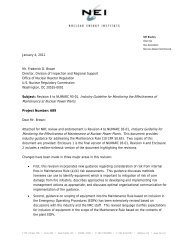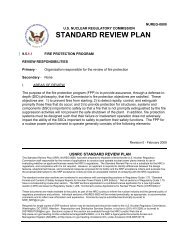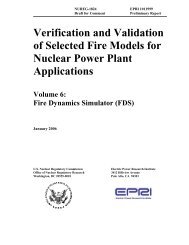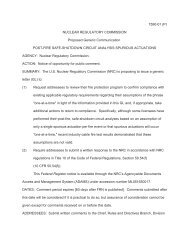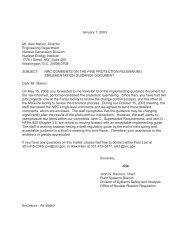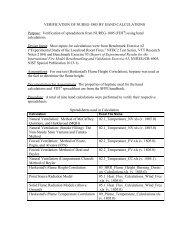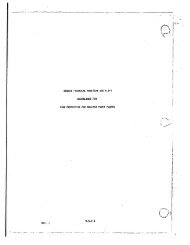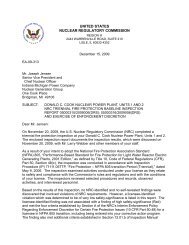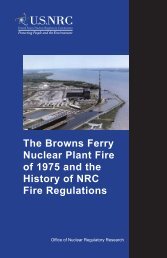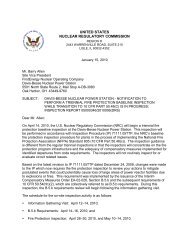NUREG/CR-6850, Volume 1 - NRC
NUREG/CR-6850, Volume 1 - NRC
NUREG/CR-6850, Volume 1 - NRC
You also want an ePaper? Increase the reach of your titles
YUMPU automatically turns print PDFs into web optimized ePapers that Google loves.
Conclusions and Closing Remarks3.5.2 Detailed Fire HRAThe recommended practice documented here represents a significant improvement in the conductof HRA at the screening level. However, this project did not develop a stand-alone methodologyfor conduct of detailed post-fire HRA. The development of detailed quantification methodologyis heavily dependent on the method of analysis selected, and hence, such methodology wasdeemed to lie beyond the scope of this document. The recommended procedures have neitherendorsed nor precluded any specific HRA method(s). In many regards, HRA in general remainsa substantial technical challenge, and no clear consensus relating to quantification methods hasemerged. Fire HRA adds additional challenges that have not yet been addressed by the broaderHRA community.3.5.3 Automated Fire PRA Information Tracking ToolsA comprehensive Fire PRA of the type described in this report is a significant undertaking thatneeds compilation, storage, manipulation, and maintenance of a substantial amount of data, aswell as the capability to maintain and exercise many supporting models. Automation tools forrecording, integrating, and tracking the PRA information would likely enhance the viability ofFire PRA as a practical tool for plant operators.3.5.4 Plant-Specific Assessment of Manual FirefightingThe recommended model for the analysis of manual firefighting does not consider plant-to-plantvariability in the fire brigade training and capability. The current method is based on generic,industry-wide average performance statistics. As such, it is not currently designed to assess therisk benefits of, for example, a dedicated site fire department versus a fire brigade, or enhancedhands-on training of fire brigade personnel. As a part of Technical Development Teams’discussions, a framework for enhancing the method to allow for such considerations wasoutlined, but the available resources and time were not sufficient to implement the proposedstrategy. Implementation would need further definition of the proposed approach, conveningof an expert panel to provide key inputs, peer review, and baselining of the approach against asample of actual plant applications.3.5.5 Estimating Component Failure Mode LikelihoodsThe recommended approach to quantitative circuit analysis includes a methodology forgenerating case-specific component fault mode likelihood estimates (e.g., the probability ofspurious operation given failure of a specific cable in a specific circuit). The method extendsbeyond the specific circuit and cable configuration tested by EPRI/NEI circuit test configuration.The methodology was developed by “reverse engineering” the EPRI/NEI circuit failure modetest data [3.3]. Hence, the approach is nominally consistent with the available test data. However,the methodology has not been extensively peer reviewed, and additional validation would beappropriate.3-15





